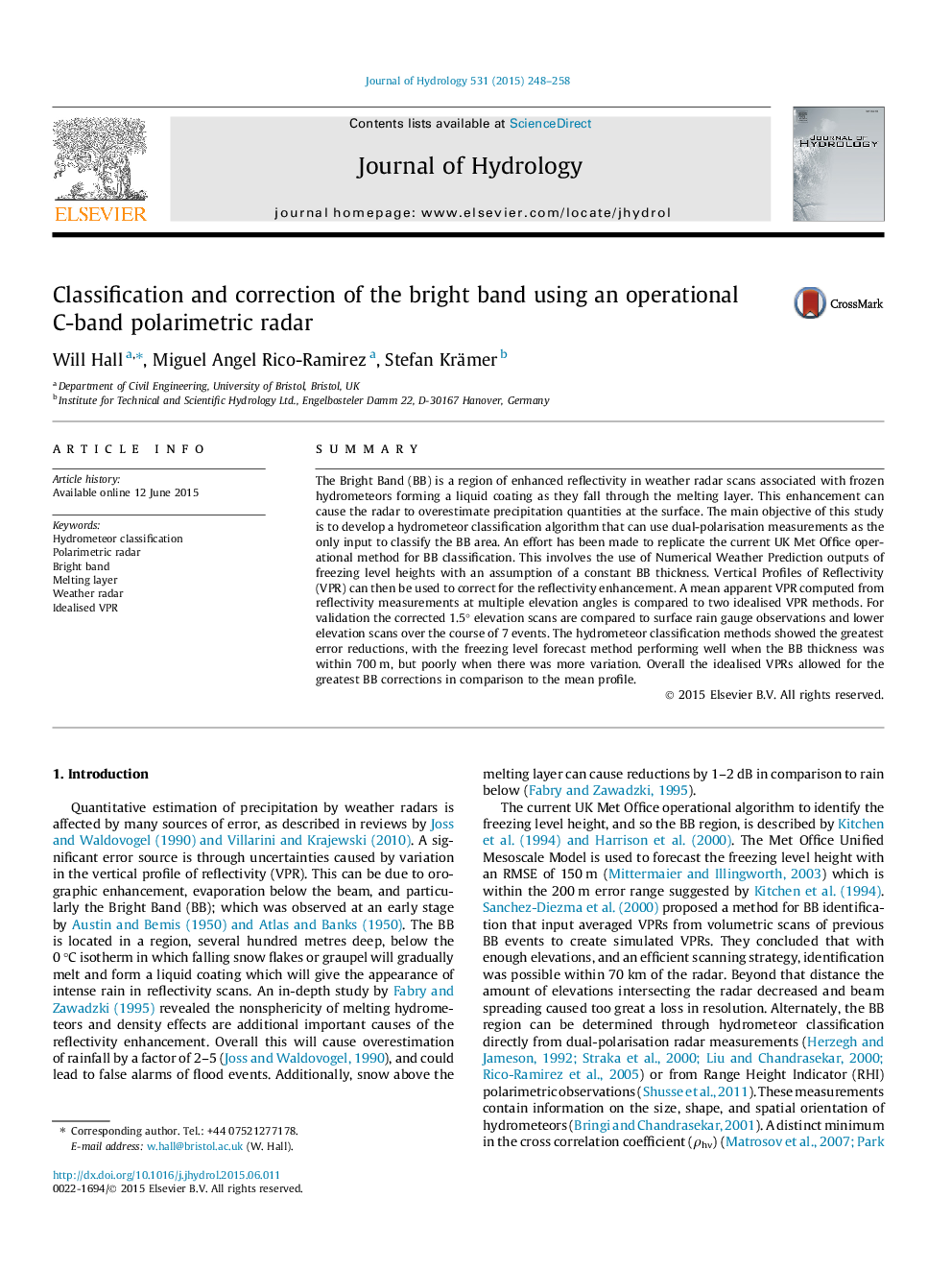| Article ID | Journal | Published Year | Pages | File Type |
|---|---|---|---|---|
| 6410416 | Journal of Hydrology | 2015 | 11 Pages |
â¢Hydrometeor classification shows improvement in bright band identification.â¢LDR and correlation coefficient perform the best for melting snow classification.â¢Idealised profiles perform the best for reducing bright band associated errors.
SummaryThe Bright Band (BB) is a region of enhanced reflectivity in weather radar scans associated with frozen hydrometeors forming a liquid coating as they fall through the melting layer. This enhancement can cause the radar to overestimate precipitation quantities at the surface. The main objective of this study is to develop a hydrometeor classification algorithm that can use dual-polarisation measurements as the only input to classify the BB area. An effort has been made to replicate the current UK Met Office operational method for BB classification. This involves the use of Numerical Weather Prediction outputs of freezing level heights with an assumption of a constant BB thickness. Vertical Profiles of Reflectivity (VPR) can then be used to correct for the reflectivity enhancement. A mean apparent VPR computed from reflectivity measurements at multiple elevation angles is compared to two idealised VPR methods. For validation the corrected 1.5° elevation scans are compared to surface rain gauge observations and lower elevation scans over the course of 7 events. The hydrometeor classification methods showed the greatest error reductions, with the freezing level forecast method performing well when the BB thickness was within 700 m, but poorly when there was more variation. Overall the idealised VPRs allowed for the greatest BB corrections in comparison to the mean profile.
